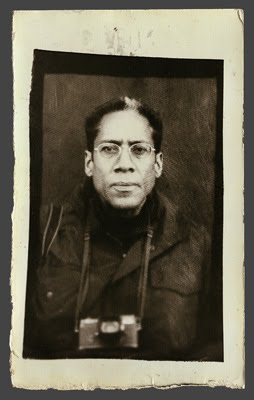
Joseph Rodriguez’s portrayal of turbulent times in the East Harlem of the ’80s is at the Bronx Documentary Center through Dec. 23
On Feb. 21, 1965, 14-year-old Joseph Rodriguez witnessed a sight he would never forget. That winter evening, he boarded a Williamsburg-bound bus from Park Slope with his mother to visit his aunt. News had spread throughout New York City: Malcolm X had been shot and killed in Harlem and racial unrest swept the city when the civil rights leader was pronounced dead.
“The whole bloody Brooklyn was on fire,” recalled Rodriguez, 52 years later. “All these black men and brown men out there burning stuff down because of what was happening. You grow up with those visions in your head.”
Rodriguez, now 66, has spent those years since collecting images since those were seared in his mind, recording New Yorkers’ lives from Brooklyn to El Barrio. Rodriguez’s latest photography show, “El Barrio in the ‘80s,” is on display at the Bronx Documentary Center until Dec. 23. The show features Kodachrome images from his latest book that depicts life in East Harlem.
Brooklyn born and raised, Rodriguez grew up as a self-described troubled teen with two visits to Riker’s Island; it was a parole officer who first suggested that he pick up photography skills. At 20, he attended classes at the Brooklyn Children’s Museum and began to document the neighborhoods he ventured into working as a cab driver. He started developing his film at home and then snagged an internship at the International Center of Photography in Manhattan.
“I went up to them and said ‘Look, I’ll do anything to be here,’” said Rodriguez, who later earned a scholarship from the center and began to work on a student project to document gentrification in East Harlem. “It changed my focus from the drug world to a new addiction – photography.”
Rodriguez graduated from the center in 1985 with a certificate in documentary and photojournalism. He also earned an associate degree in applied sciences from New York City Technical College, and also studied at the School of Visual Arts. Rodriguez has taught photography internationally, and is currently a professor at New York University and at the International Center of Photography. As a photojournalist, Rodriguez has been featured in National Geographic, The New York Times, and magazines such as Esquire and Newsweek. His work has been published in 14 books and he has published more than 30 photo essays in publications worldwide.
To get the shots for this show, Rodriguez attended birthdays, funerals, holy communions and other intimate events – waiting for the perfect moment to capture an image.
“When I get off at 149th and 3rd, I’m at home,” said Rodriguez. “I’m at home because I can talk to the gente, I know what their concerns are, I know what it’s like to grow up on welfare, I know what’s it like to be a dope fiend.”
Rodriguez describes himself as a “turtle” of a photographer, one who likes to wait, observe and take his pictures slowly. He often will start conversations with his subjects, visit them at home, ask them questions, before he finds the right moment to capture a photo.
“I’ve spent a lot of time at kitchen tables.” said Rodriguez. Listening, he said, and taking time to learn about subjects is what makes a good photo. “Through photography, I learned how to do things more slowly. Time is very important.”
One of his favorite instances was taking a portrait of a yoga teacher who taught meditation at Bridges Juvenile Justice Center, the former detention center colloquially known as “Spofford,” in Hunts Point. He had been to many juvenile centers to take pictures before, eventually producing the 2004 book “Juvenile,” but Rodriguez said Spofford was so controversial he couldn’t get permission to visit with his camera. So he opted to picture the yoga teacher in the middle of 149th Street, holding a lotus position.
“I always loved the work that he brought in,” said Michael Kamber, the founder and director of the Bronx Documentary Center in Mott Haven and a professional photo journalist himself. ”It was one of the most intimate and in-depth looks at a community.”
Kamber couldn’t recall whether he or Rodriguez first suggested featuring the East Harlem pictures in a show; they speak often, and worked together as photojournalists in Haiti in the 1990s and later, Afghanistan in 2001.
According to Kamber, the educational elements for this show will focus on teaching students about housing, disinvestment in the ‘70s, and gentrification. Conversations about the art will be tailored for the hundreds of students who visit the center each semester.
As a teacher and mentor, Rodriguez says he’s very happy that students will be exposed to images of the 1980s in their neighborhoods.
“It’s about our kids,” said Rodriguez. “This show is not about my ego, or how great I am or how great the photos are. It is about what this individual did, who grew up similar to the way they are growing up, with all the difficulties. I want them to say, ‘That guy’s last name is Rodriguez, that guy went to Riker’s Island. But you know what? That guy changed something.’”
“El Barrio in the ‘80s” will be on display at the Bronx Documentary Center until Dec. 23. The Bronx Documentary Center is open from 3 to 7 p.m. on Thursdays and Fridays, and 1 to 5 p.m. on Saturdays and Sundays. The center is located at 614 Courtlandt Ave. Admission is free.

